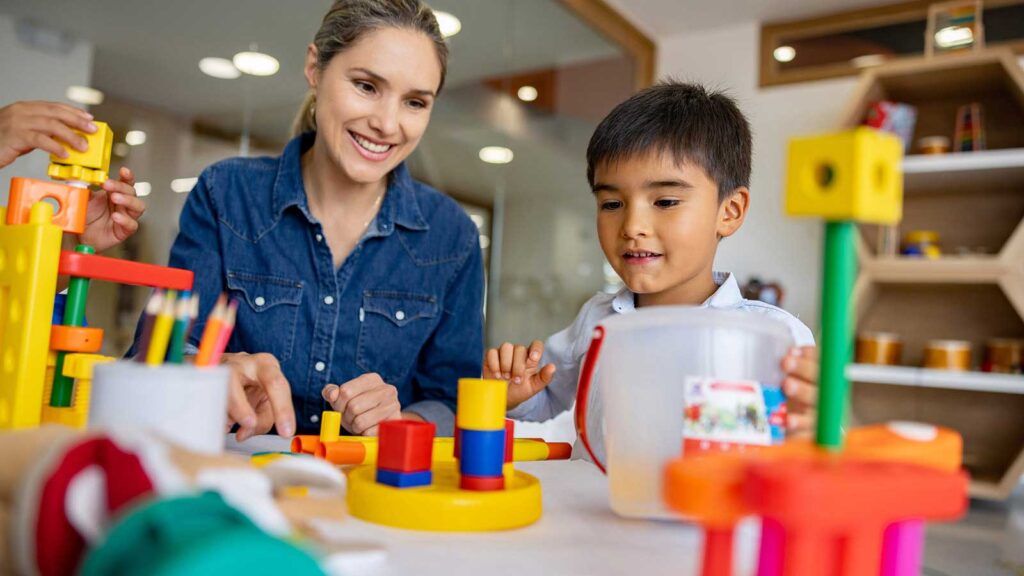Occupational therapy for kids is a type of health care that helps children do things they want and need to do through the therapeutic use of daily activities. One approach targets the physical, cognitive, and sensory obstacles impacting a child’s ability to engage fully at school, play, or within their social context. In this post, we will discuss what childrens occupational therapy is, how it helps and the impact it can have on a child.
Understanding Childrens Occupational Therapy
Childrens occupational therapy focuses on helping children with developmental, physical or cognitive challenges better carry out daily activities. Occupations identify what occupies a kid’s time (self-care/dressing, eating, grooming; play and leisure activities—school and learning tasks; social occurrences; fine motor movements and gross motor skillsets). Paediatric occupational therapists help children build skills in these areas to become more independent, boost self-esteem, and enhance development for better overall health.
What Types of Children Would Benefit from Occupational Therapy?
Children with many different types of conditions and challenges can benefit from occupational therapy, such as developmental delay, autism spectrum disorders, attention deficit hyperactivity disorder (ADHD), learning disabilities, sensory processing disorders, physical disabilities or injuries, difficulties developing fine and gross motor skills, visual processing issues, behavioural or emotional disorders and genetic disorders (e.g., Down syndrome). This means that even kids who experience difficulties in everyday life related to their occupation but do not necessarily have a diagnosed condition will benefit from occupational therapy, regardless of whether they lag behind peers across the board.
Performing the Framework of a Detailed Occupational Therapy Process
Occupational therapy is usually a process when the first time your child begins OT. It starts with an evaluation in which the occupational therapist observes, tests and talks to parents and teachers about a child’s unique strengths, challenges and needs. After the initial assessment, the therapist collaborates with the family to create attainable and quantifiable objectives for the child’s development. A unique treatment plan is developed, therapy sessions are scheduled regularly, home and school recommendations are made, changes are monitored, and adjustments to the treatment plan are initiated as necessary. Even input from other professionals involved with the child is sought for their overall development.
Overview and Advantages of Common Techniques
They can use a combination of approaches such as sensory integration, fine-motor and gross motor skill development, visual-perceptual training, adaptive equipment, play-based therapy, self-care skill training, behavioural methods for positive shaping of behaviour-cognitive skills development, social skills development-contextualised using novelty or prestructured methods. As a result of these treatments, children with autism can gain greater independence in daily activities, higher self-esteem, improvements in school performance and social skills as well as motor skills, better sensory processing, increased attention to tasks, improved regulation of emotion, more participation in activities, and an overall better quality of life.
The Role of Parents
The importance of parents in their child’s occupational therapy cannot be understated. Parents, family members, or caregivers can help facilitate progress by being involved in therapy sessions and at home, talking to the therapist(s) more about their child, creating an environment that encourages practice (e.g., making it a part of daily routines), being patient and encouraging, and speaking up for their child’s needs as a whole.
How to Select an Occupational Therapist
Some factors that parents should take into consideration when choosing an occupational therapist include credentials and experience, paediatrics or adults only, treatment approach, style of communication used during your first session spanning 30 minutes with the parent and child together if both meet/take place, location within driving distance for weekly visits as long as you can find a time that works for both parties at their private practice location, and available hours based upon what portfolio they may have. Parents should ideally be able to utilise state-provided care resources, such as insurance coverage. Is there any fee exchange? Well, how a therapist can agree with the family goals and values of being genuine and good at communication but only sometimes requires an assessment gets them off on a good foot already.
Trends Ahead: School-Based Therapy
Children receiving occupational therapy services as part of special education programs often benefit from various classroom adaptations. These may include modifications to learning materials to make content more accessible, strategies for improving handwriting and fine motor skills, as well as support for enhancing social interactions. Emerging trends like telehealth services, virtual reality and gamification, wearables, evidence-based practice, and interdisciplinary approaches help keep therapy more accessible, engaging, and effective.
Conclusion
Childrens occupational therapy is a valuable tool for assisting children in overcoming hurdles, achieving independence, and realising their potential. Occupational therapists work on physical, cognitive, and sensory problems so children can fully engage in daily life activities, achieve their potential at school, and socialise with family and friends. Children with autism have a wide variety of characteristics, but with the help of well-trained therapists, engaged parents, and holistic care, children can learn skills to succeed in every facet of life.
About Author
You may also like
-
Unlock Exclusive Member Perks: Recovery, Rewards, and More at Universal Athletic Club
-
Dual Diagnosis: Treating Co‑Occurring Disorders
-
Choosing Between Inpatient and Outpatient Treatment
-
Why Your Body Might Be Whispering “Ayurveda, Please”
-
A New Hope for Patients: Exploring Aplastic Anemia Homeopathic Treatment in India


